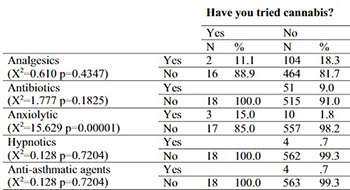Simultaneous abuse of different psychoactive substances among adolescents.
DOI:
https://doi.org/10.17305/bjbms.2003.3570Keywords:
adolescence, genetic factors, biogenetic factors, cannabis, tobacco, alcoholism, Bosnia and HerzegovinaAbstract
Although the drug abuse has been evidenced in every age of the human life, it seems that its occurrence is crucial during adolescence period with its well-known consequences on the further personality development. Adolescents like to experiment with risky lifestyles without adequate knowledge about their possible harmful effects and consequences. International experiences have represented that early onset of the risky behaviour predisposes young persons for serious problems in social, psychological and physical future lives. It has been noticed that adolescents like to combine different psychoactive substances. Therefore the aim of this study was to present the most important and the most actual substances abused by young adolescents together with the substance characteristics. This research included 600 adolescents with the same prevalence regarding age, sex and living zone (rural-urban). Our research showed that simultaneous abuse of various harmful psychoactive substances (polydrug abuse) is the most common (tobacco smoking and cannabis consumption in 75% of cases, alcohol consumption and cannabis consumption in 80% of cases).
Downloads














